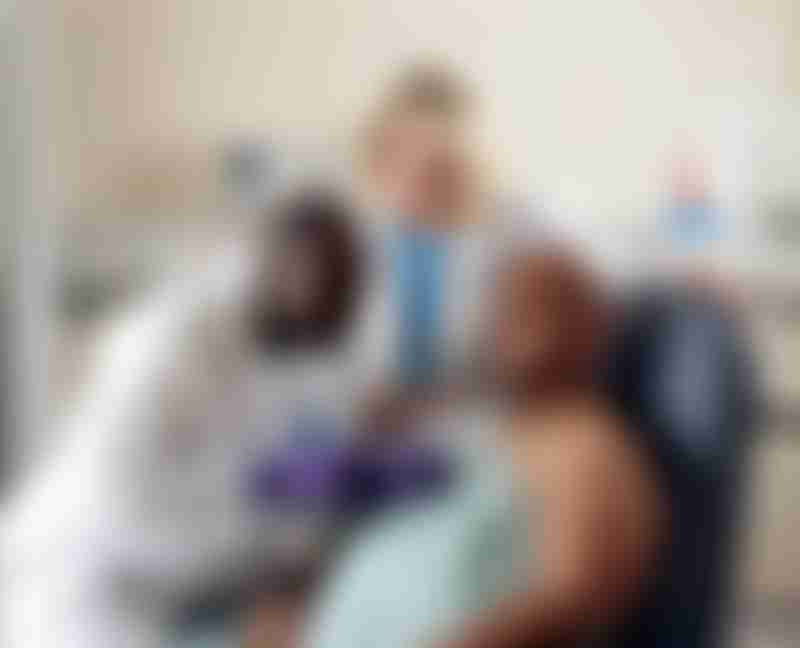Chemo Port: What I Wish I Knew

Source: Unsplash
If you are undergoing treatment for lung cancer, your doctor may recommend the use of a chemotherapy port, commonly called a chemo port. These small medical devices can provide significant relief by eliminating the need for repeated needle sticks into veins in your arms. This article aims to help you better understand when and why a chemo port may be a viable option during your care.
Chemo ports are often advised if you require four or more cycles of intravenous (IV) chemotherapy infusions. In addition to sparing you from frequent painful needle pokes, they provide a safe route for administering potentially caustic chemotherapy drugs directly into the bloodstream.
Collapsed or damaged veins
Chemotherapy itself can take a toll on veins over time, causing them to become hardened, scarred, or collapsed - making it increasingly difficult to insert traditional IV needles. This vein damage and resistance not only leads to more discomfort during treatment but can also create delays or complications that impact your well-being and outcomes. Having a chemo port implanted can help circumvent vein-related issues altogether.
“At the beginning, my amazing infusion nurse was able to access my veins without any issues, but towards the end, she was struggling to find a “cooperative” vein that hadn’t collapsed yet and would handle the injection. Often, it took several minutes and a few tricks to find one.
I was able to finish my treatment but I really wished I had a port. It would have been so much easier on my veins, and it would be less stressful on me and my nurses.”
Izabela Gardula, stage III breast cancer patient.
Long-term convenience
For some patients with advanced non-small cell lung cancer without a targetable mutation, maintenance chemotherapy has become a standard part of their care plan. This approach involves receiving lower doses of certain chemotherapy drugs every 3-4 weeks on an ongoing basis until disease progression. The prospect of years of intermittent IV treatments can understandably feel daunting.
Having a chemo port in place can make this maintenance phase much easier and more tolerable by allowing quick medication delivery without repeated vein access attempts. Do not hesitate to discuss any concerns about long-term treatment with your cancer care team - interventions like chemo ports are intended to improve your overall experience.
Living with a chemo port
While you may notice a slight raised area or bump under the skin where the chemo port is located (usually near the collarbone), it should not be overly noticeable unless someone is specifically looking for it. Many patients find that having a port does not limit clothing choices or require any special accommodations.
One cancer patient shared her first-hand experience:
“During the (IV) infusion I noticed how well one of those little dresses worked to be able to access the chemo port. The neck stretches easily but bounces back when the IV comes out… I am now cancer-free — or No Evidence of Disease, as they say — so that is great. But I am still in treatment and still have side effects and will probably have to make more adaptive clothing choices,”
- MJW, 71, Vero Beach, Fla.
Reminders on port use
It is important to note that some healthcare facilities may have policies limiting port access solely to chemotherapy treatments while you are actively receiving cancer therapy. If you anticipate needing to use your port for other purposes like blood draws or IV antibiotics, check with your oncology team first to avoid issues.
Questions to ask about getting a chemo port
Do not hesitate to ask your cancer care team any questions as you consider whether a chemo port is right for your treatment plan:
- If they do not recommend a port, what is the reasoning?
- Does accessing the port cause significant discomfort?
- What are the advantages of a port versus traditional IV access?
- Will having a port limit my mobility or range of motion?
- How soon after implantation can I begin using the port?
- What risks or potential complications are associated with ports?
Your oncologist and nurses are there to fully address any concerns you may have. While chemo ports can take a little getting used to, they are designed to improve your overall treatment experience and outcomes. Maintaining an open dialogue with your care providers is essential.
Related: Chemo Port for Lung Cancer